
Below is a curated selection of American-written pirate texts, both fiction and non-fiction.
Books that link to Open Library are available as e-books or audiobooks.
Blackbeard: America's Most Notorious Pirate
By Angus Konstam
Pirates Past Noon - Magic Tree House #4
By Mary Pope Osborne
On Stranger Tides
By Tim Powers
Below are the first 2 stanzas and a music video of another famous pirate shanty:
My name is William Kidd,as I sailed, as I sailed
My name is William Kidd, as I sailed
My name is William Kidd, God's laws I did forbid
And most wickedly I did, as I sailed, as I sailed
Oh, my parents taught me well, as I sailed, as I sailed
My parents taught me well, as I sailed
My parents taught me well to shun the gates of Hell
But against them I rebelled, as I sailed, as I sailed
Here's a fun pirate-themed game a lass or buccaneer of any age can enjoy, argh!
This game is an FPS that plays like a lite version of Unreal Tournament (swashbucklers long in the tooth will remember that title), but looks like Minecraft. If you're looking for a fast-paced adrenaline rush, look no further!
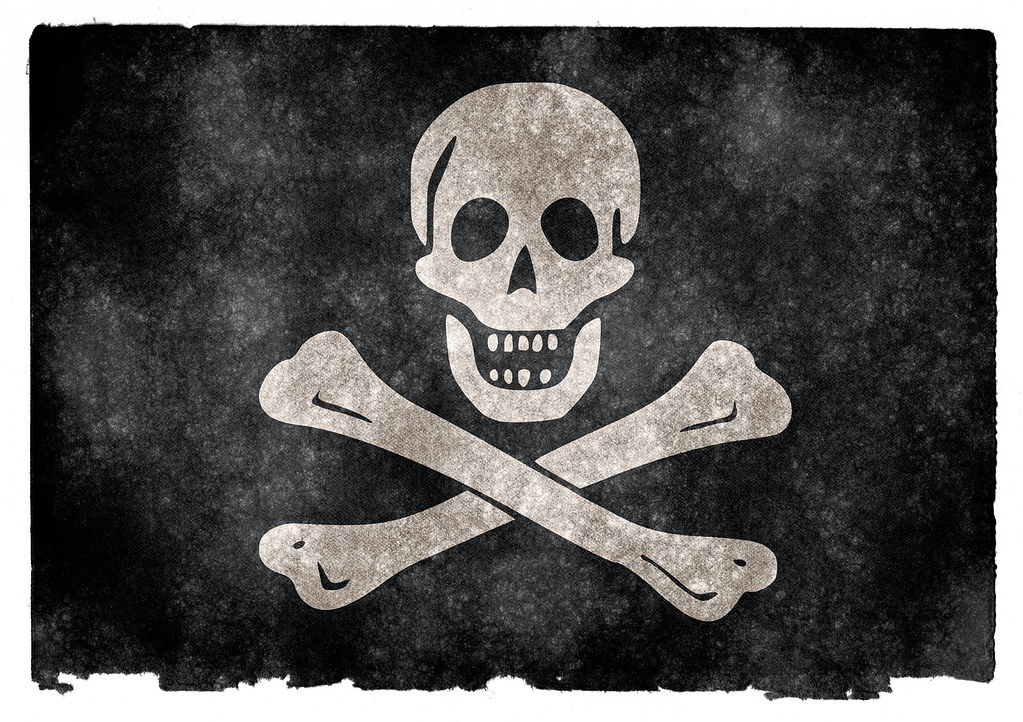
*Jolly Roger Flag. Image provided by Google Creative Commons.
Much like the United Kingdom, the US has a long and dark pirate history of its own. Just like the UK, America is also overshadowed by the evil deeds that took place a couple hundred miles south of Miami, in the Caribbean Sea.
Interestingly, if the definition of piracy extends into smuggling and warfare, those salty scallywags helped shape America for hundreds of years. Privateers would bring in loads of gunpowder and firearms during the American Revolution and Civil War. Invading French and British armies injected troops into those same wars for political maneuvering. When the rest of Europe had ended slavery in their countries by the late 18th century, the vilest creatures ever to swab decks continued capturing and smuggling Africans into the continental United States for another 50+ years in the illegal Trans-Atlantic trade. The British Royal navy was charged with engaging these ship and freeing the slaves within during this particularly bloody and hostile period of piracy.
With the bare-bones history covered, let's take a closer look at 3 particular areas whose cultures were shaped by the most notorious treasure hunters in pirate lore.
Featured Pirate: Edward Teach (Thatch) - Blackbeard
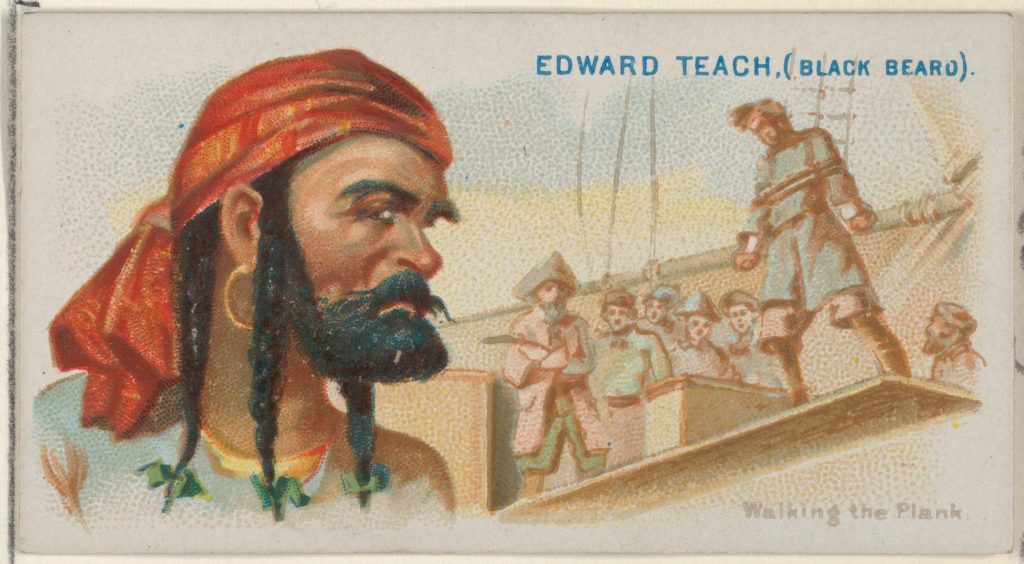
*Edward Teach - Blackbeard. Image provided by Google Creative Commons.
Land ahoy! We will be dropping anchor in a few different spots around North Carolina.
First, we will visit Ocracoke Island, NC - the final resting place of the world's most notorious pirate, Edward Teach (Thatch), aka Blackbeard! Learn about the scourge of the seven seas below, as well as the terrible fate which befell him.
Pirate Jamboree
Now that you have a greater appreciation for Blackbeard and Ocracoke's history, let's join the annual celebration held at this island which was once his hideout.
The Pirate Jamboree commemorates the final days of Blackbeard. Those interested in the particulars of the festival, such as date and time, may visit the Ocracoke Island Realty page for event information. Events through the weekend often include movie screenings, historical lectures, sword fights, reenactments, crafts, exhibitions, live music, food, and more! The event always concludes with a memorial for the memories of both Blackbeard and Lt. Maynard's crews.

*Pirate Jamboree - pirate ship reenactment. Image provided by Ocracoke Island Realty.
Queen Anne's Revenge Exhibit
Up the anchor! We cast off for Beaufort, NC where Blackbeard's warship, Queen Anne's Revenge, ran aground. The museum and exhibit hold many artifacts retrieved from the beached ship, as well as ship models, documents, and other historical artifacts. This museum brings piracy to life in the most profound way and may be the best part of this entire vacation.
While in Beaufort, it is worthwhile to visit the North Carolina Maritime Museum for a broader historical view of North Carolina's sailing history.
Down the Atlantic Coast we sail, finally landing at St. Augustine, Florida - the "oldest city" in the US.
Click the image below to learn about St. Augustine's most famous pirate.
Featured Pirate: Robert Searle (aka - John Davis)
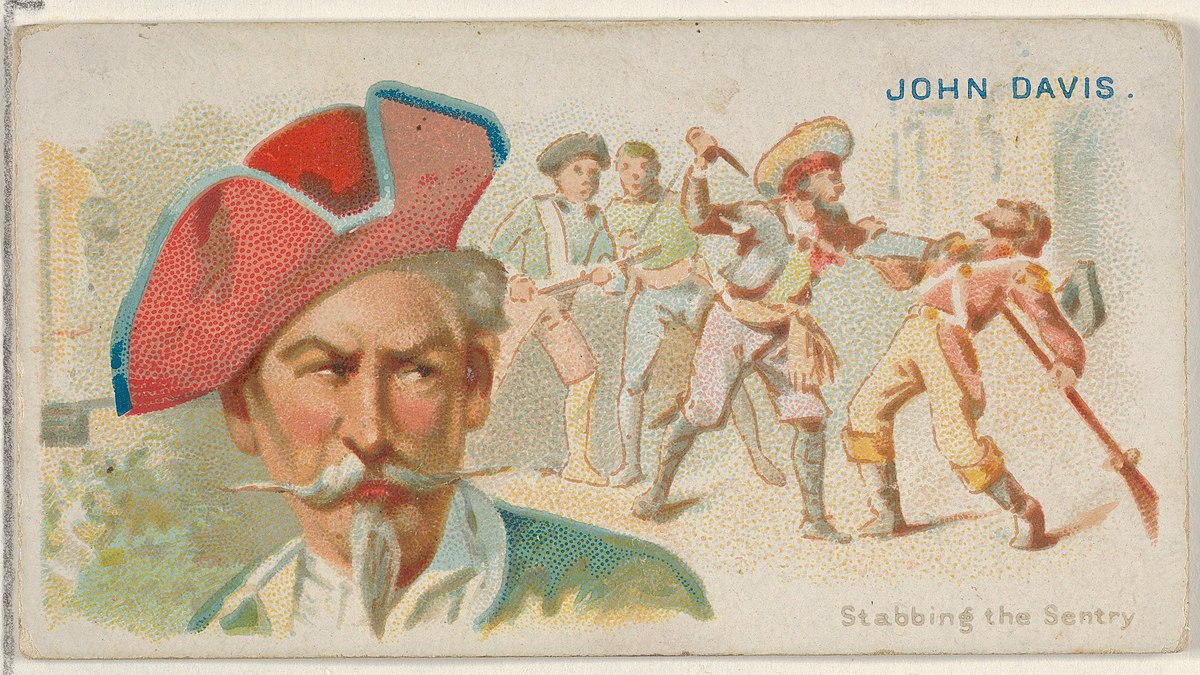
*Pirate Robert Searle, aka John Davis. Image provided by Google Creative Commons.
Pirate Museum
Founded by Spanish conquistadors in 1565, St. Augustine was quickly fortified as it became the capital of Spanish Florida and a key piece in Spanish trade. While the conquistadors were regarded as gentlemen sailors and explorers, they are not unlike pirates as they used brutality to secure ships, trade routes, land, and valuable supplies. Almost anything was "legal" for many colonialists during this time...
To learn more about St. Augustine's maritime history, let's first explore the Pirate Museum, which is quite similar to Cornwall's Pirate Quest.
*Fun Facts: This museum has a REAL Jolly Roger, as well Captain Kidd's journal from his last voyage, and MORE!!!
Other Attractions
Nothing quite beats the Pirate Museum if that's solely what you're interested in. However, if you are more interested in tangential pirate history, like Spanish colonialism, and if you'd love to see some real fortifications from the 17th and 18th centuries, check out some of the following locations below:
- St. Augustine Lighthouse & Maritime Museum
- Ponce de Leon's Fountain of Youth Archaeological Park
- Castillo de San Marcos National Monument
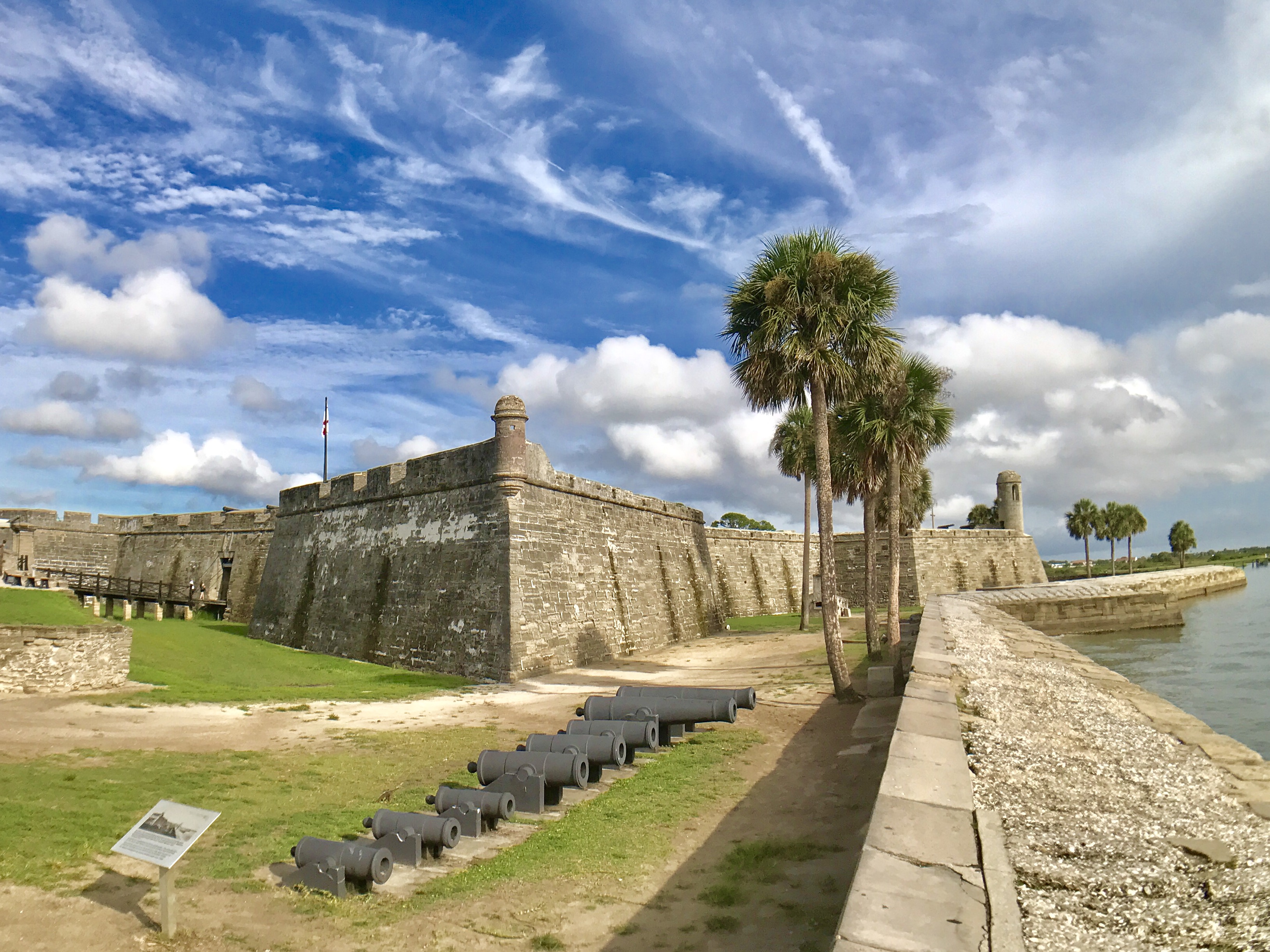
*Castillo de San Marcos. Image provided by Google Creative Commons.
After re-boarding the ship and setting sail once more, we travel down Florida's Atlantic coast, around the Southern tip, and back Northeast through the Gulf of Mexico.
Destination: New Orleans, Louisiana!
Featured Pirate: Jean Lafitte

Lafitte's Blacksmith Shop - Historical Site
New Orleans is known for many things, but pirates? Why yes! Jean Lafitte's name is scattered all about the city, with numerous monuments dedicated to the N.O. hero. However, his beginnings were not so stalwart. This pirate, turned spy, turned savior met with Andrew Jackson (who would later become President) during the War of 1812 against the British. New Orleans was defenseless, and Lafitte was a seasoned Naval officer with a loyal band of men. Upon agreement that he and his men would be pardoned for all deeds committed during their years of piracy and smuggling, they would defeat the invading British - and Lafitte was good to his word, as was Andrew Jackson.
On Bourbon Street, the blacksmith shop used by Jean and his brother Pierre as a smuggling front still stands and is a popular tourist attraction. Learn about the building's secret treasure in the French Quarter Ghost Tour section below!
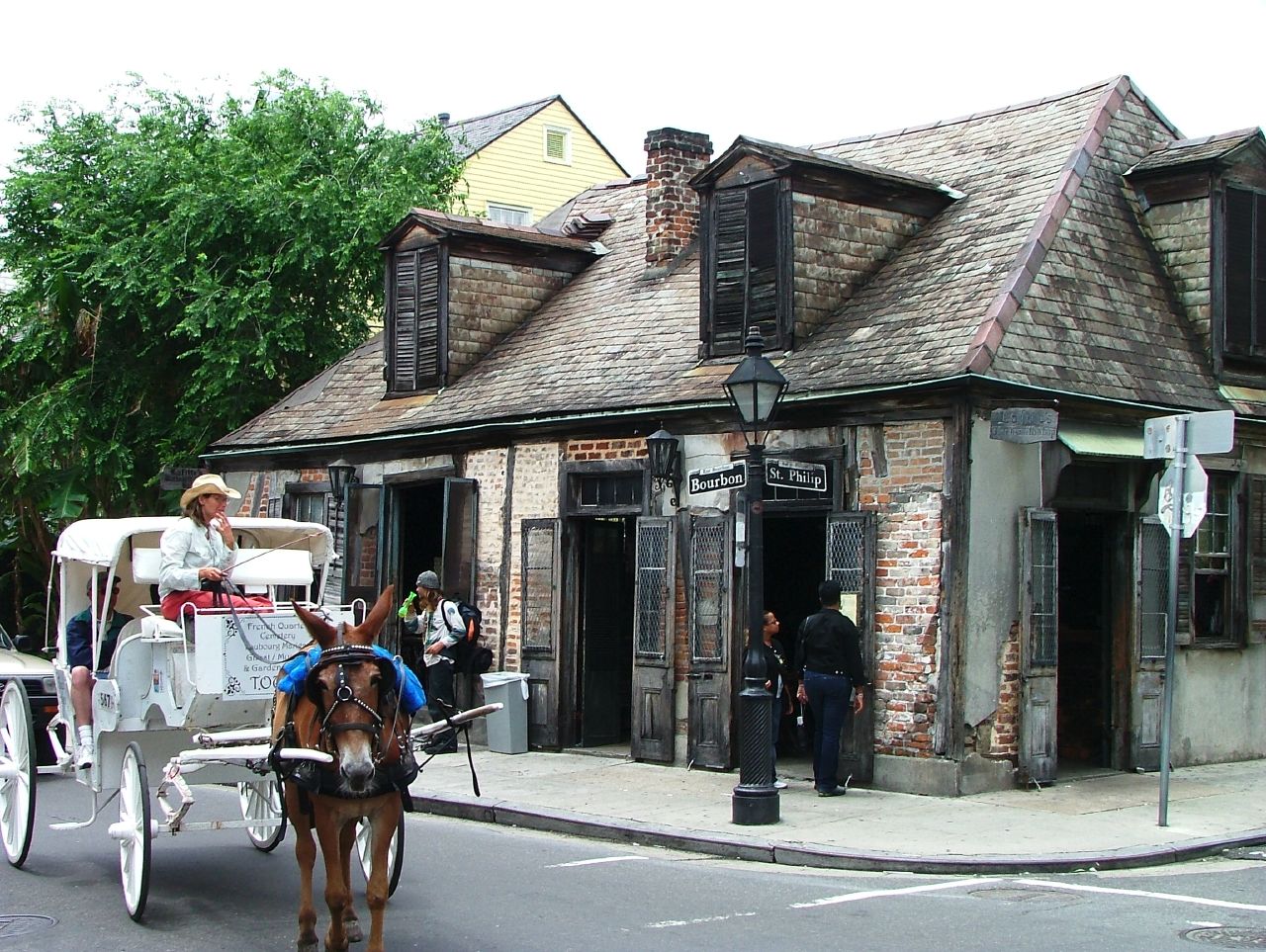
*Lafitte's Blacksmith Shop. Image provided by Google Creative Commons.
French Quarter Ghost Tour
Pirates are mighty afraid of ghosts. Davy Jones being first amongst the vengeful spirits that await us in the deep. So, there's no better way to spend a New Orleans night of piracy than on a ghost tour! Watch the video below and try not to quake in your boots.
Did you hear in the video that there are yet two undiscovered pirate treasures? One is believed to be located in Lafitte's Blacksmith Shop Bar (mentioned above) - in the fireplace guarded by old pirate spirits. The other treasure is speculated to be somewhere out in the swamplands of the city. Good luck trying to get yer very own pirate treasure, yargh har har!
Weigh anchor and hoist the mizzen! We leave America, and sail to the Caribbean, buckos.
Time for your second pirate entrée.
Click on the name of the recipe to view it online and learn more. Enjoy today's selection!
*Note: These recipes are intended to serve whole crews. If there be few pirates requiring vittles, reduce quantities as needed.
Lobscouse (stew)
From "The Pirate Empire" Blog:
2 pounds corned beef
2 pounds smoked ham
1 bay leaf
4 large onions
6 large potatoes
½ pound ship’s biscuit, pounded into crumbs
1 teaspoon allspice
1 teaspoon nutmeg
½ teaspoon ground cloves
Salt and pepper to taste
Place the meat in a pot with the bay leaf and cold water to cover. Bring to a boil and cook until meat is tender, about 2 ½ hours. Discard the bay leaf. Skim the fat that has risen (pirates called tis “slush”) and reserve. Reserve 3 cups of the liquid.
Cut the meat into ½” dice, cut potatoes and onions into ¾” dice.
Heat 6 tablespoons of slush in a heavy frying pan and brown the meat. Remove the meat, draining the fat back into the pan. Sauté the onions until tender, add the potatoes and cook about 6 minutes. Add the meat and 1 ½ cups of cooking liquid, and cook until potatoes are almost tender, then add the biscuit crumbs and the spices, including plenty of pepper. Cook 5 more minutes. Add more liquid if you like it more moist.

*Lobscouse stew. Image provided by Google Creative Commons.
Wondering where the "biscuit" part of the recipe comes from? What's a soup without bread!
*Warning - The biscuit will be VERY hard. It is meant to be broken apart and soaked in meat broth or a stew, like the Lobscouse above, before being eaten.
Also from "The Pirate Empire" Blog:
4 cups of unbleached flour
1 cup of water
1 teaspoon salt
Preheat oven to 250 degrees
Mix the flour and salt, then add the water and mix until you have a very stiff dough. Let it rest for 10 minutes, then beat it out flat with a rolling pin or a wine bottle. When its ½ inch thick, fold it and beat it back to ½ inch. (Instead of beating it, you can also run it through a pasta maker.)
Continue for about half an hour, or until the dough is smooth and elastic.
Roll the dough out one last time, into a square shape and cut into 2” squares. Prick each with a fork.
Place on an ungreased cookie sheet. Bake at 250 degrees for one hour. Cool on racks.
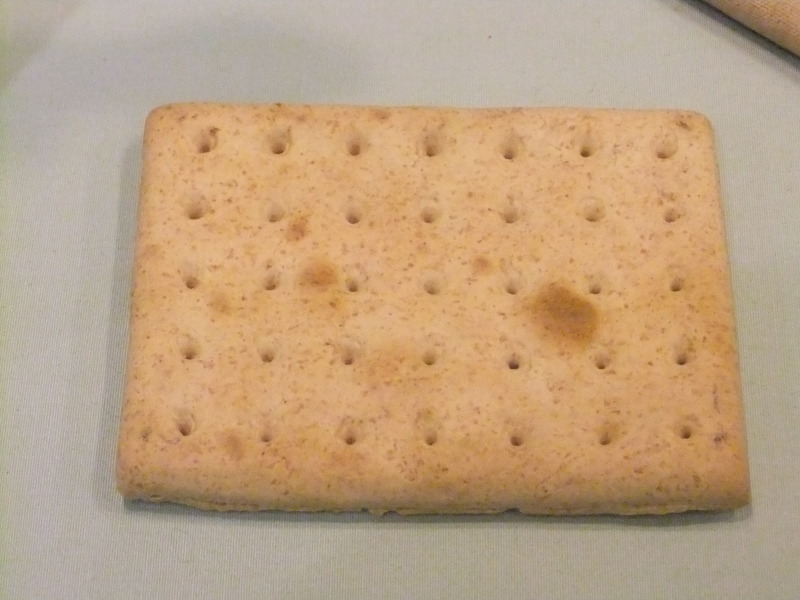
*Ship's Biscuit. Image provided by Google Creative Commons.
"Blackbeard: The Pirate" (1952)